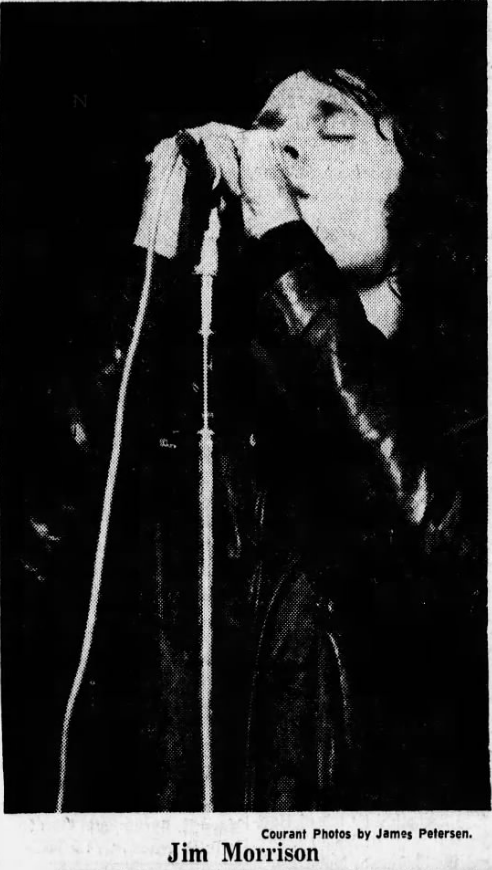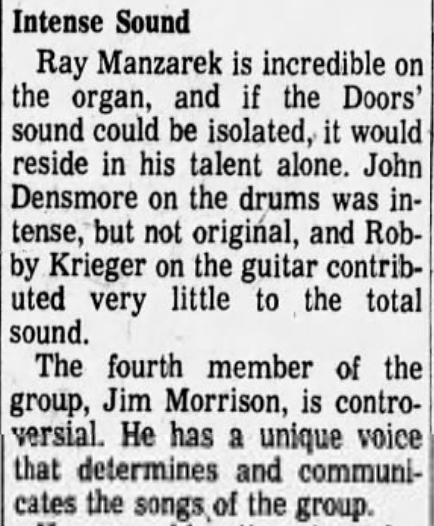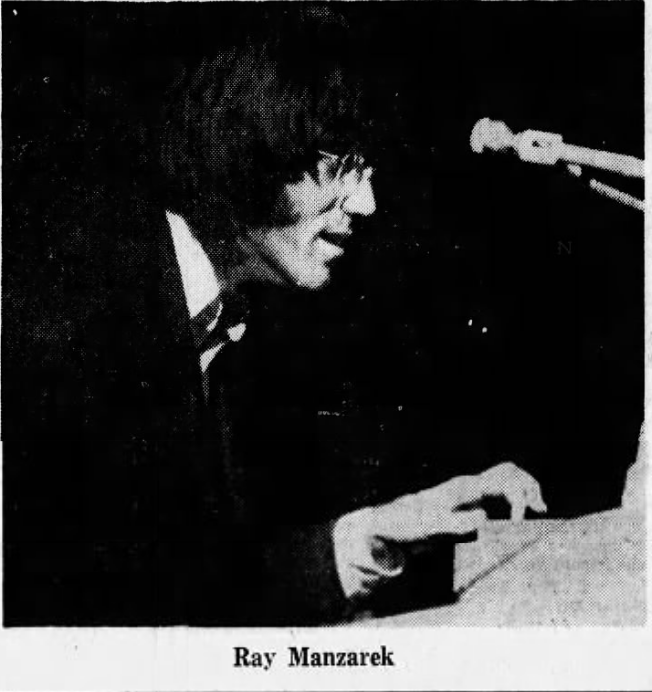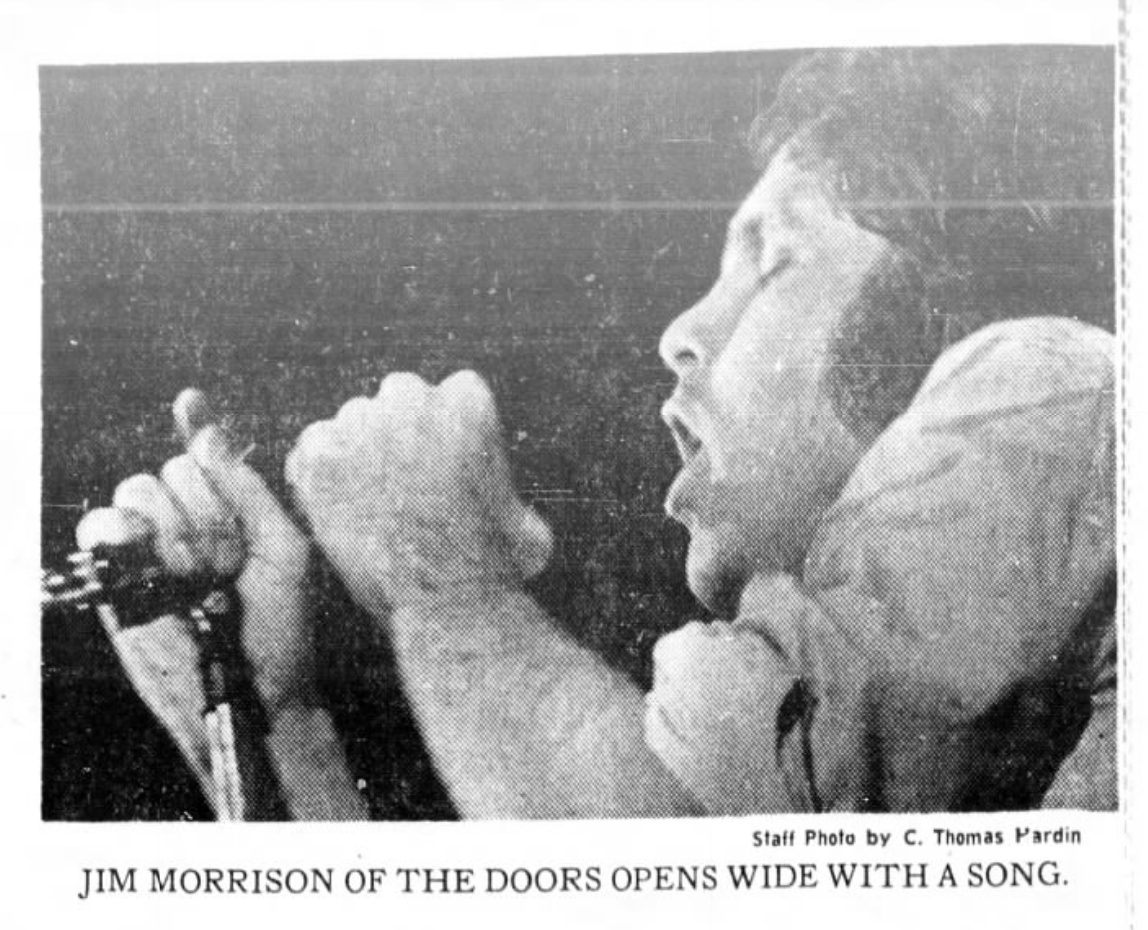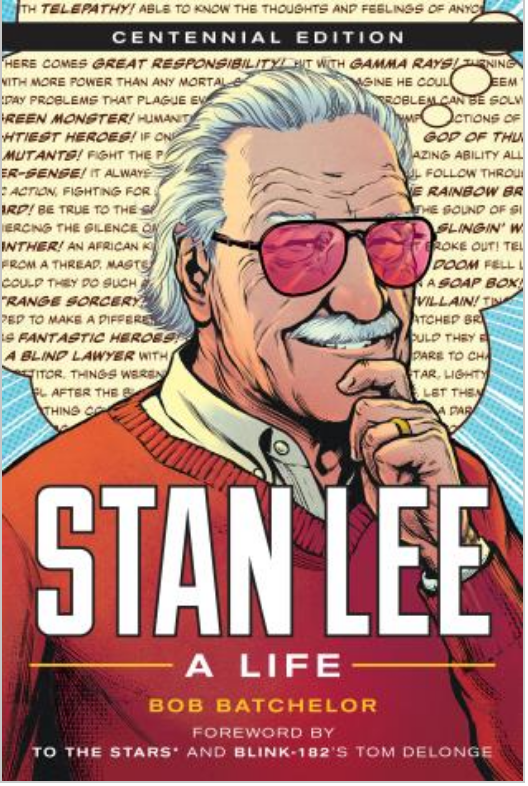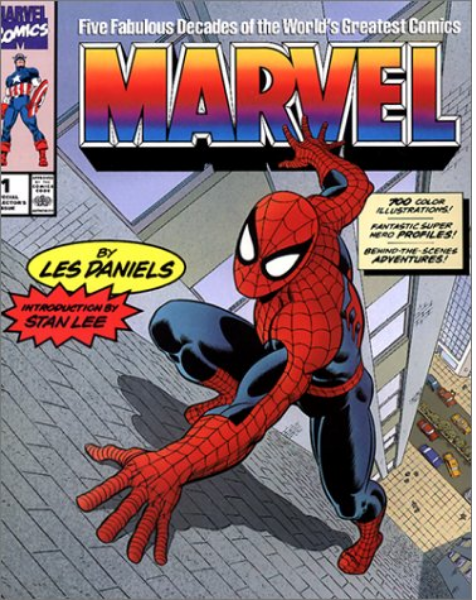Jim Morrison’s arrest in December 1967 while on stage at the New Haven Arena is important in understanding the Sixties. The incident represents how myriad people and institutions in a position of power were willing to use their authority to stamp out or thwart those who symbolized something they didn’t understand or even attempt to comprehend. For those wielding a hammer, as is said, everything looks like a nail. The establishment’s reaction to Morrison and the Doors was to look at them as something evil that had to be stopped.
Read moreHappy Birthday Jim Morrison -- The Legendary Dark Knight of American Rock Music History
The “real” Jim Morrison comes to life in Roadhouse Blues: Morrison, the Doors, and the Death Days of the Sixties by award-winning cultural historian Bob Batchelor. December 8 is Jim Morrison’s birthday. He would have been 79 years old. His death at 27 is part of rock music folklore and pop culture history, but what a tragedy.
Read moreDOORS CONCERT REVIEW -- 55 YEARS AGO!
“Primitive, Grotesque, and Blatantly Sexual”
Jim Morrison, lead singer of the Doors, Hartford, December 2, 1967
Hartford Courant reporter James Petersen was not a fan of The Doors. In his review, published 55 years ago on December 2, 1967, he centered on then-accepted notion that anything from California was odd and drug-addled. “Beautiful, beautiful” is most certainly a drug reference, his indication of how a high Californian would react to the spectacle of the band and its leather-clad singer.
Harsh criticism of the Doors concert
Rather than declare the Doors bad, Petersen puts his opinion in the mouth of an older “ticket seller,” who he believes would see the band, audience, and performance as “primitive, grotesque, and blatantly sexual.” What the reporter wants the reader in conservative Hartford, Connecticut, to understand is that the Doors and Jim Morrison are dangerous. The coded language is the type the band often faced when looked at by those who represented the establishment or “traditional” values.
In other words, devalue the band and its members as both musicians and people: fear the grotesque and outlaw the sexual.
The drumbeat against the Doors and Morrison picked up pace in late 1969, especially after Morrison was arrested on stage in New Haven just one week later. The entire nation — and the federal government — would turn against the Doors, a slippery slope that would be the catalyst for Morrison’s untimely death just three and a half years later.
The reporter is obviously an organ fan…he loves Ray’s organ!
Surprisingly, the only member of the Doors that the reporter enjoyed was Ray Manzarek’s organ. The irony here is that Ray’s driving sound, ranging from dark and eerie to carnival-like and filled with joy, was the sound of the band. How could they be primitive if he liked their essential sound?
Ray Manzarek — “Keyboardist” of the Doors and mastermind of their unique sound!
When Petersen did opine on where he ranked the Doors versus other bands, he ranked them lower than both Procol Harum and the Paul Butterfield Blues Band.
Read the story of the Doors and the Death Days of the Sixties in Roadhouse Blues, published by Hamilcar Publications! For the holidays, the book has been discounted to $15 when ordered at: https://indiepubs.com/products/roadhouse-blues/
JIM MORRISON ARRESTED -- AGAIN
With Miami Indecency Trial Looming, Jim Morrison Arrested on Flight and Faces Federal Charges
Jim Morrison couldn't stay out of trouble, especially when actor Tom Baker was instigating. They got really drunk and rowdy on a flight to Phoenix to see the Rolling Stones, but instead, got arrested and in serious jeopardy when charged with felony offenses.
Jim Morrison -- Arrested Again
Between March 5, 1969, when acting Miami police chief Paul Denham took warrants out on Jim, and the start of the trial on August 10, 1970, the federal government, the state of California, and the state of Florida tried several legal maneuvers to get the Doors front man to submit. At the same time, Jim’s attorney, Max Fink, fought these efforts, including filing several motions to dismiss the case.
"Too High in Sky" -- Jim Morrison Arrested & Jailed in Phoenix
While the wrangling sped along, Morrison’s personal life continued to unravel. He was arrested twice more in that seventeen-month span, first in November for causing a disturbance on a flight and then later the next August for public drunkenness in West Hollywood (when a sixty-eight-year-old woman found him sleeping on her porch and called police). According to Ray Manzarek, "Between Miami and Phoenix, Jim was facing a maximum of over thirteen years in prison."
"Between Miami and Phoenix, Jim was facing a maximum of over thirteen years in prison."
— Ray Manzarek
For more great stories, interesting analysis, and an in-depth look at the Doors and Jim Morrison, check out Roadhouse Blues: Morrison, the Doors, and the Death Days of the Sixties (Hamilcar Publications)
Roadhouse Blues by Cultural Historian Bob Batchelor
The Sound of the Sixties -- The Doors "Electric Eclectic"
What fans around the world were hearing, according to Ray Manzarek, was “electric eclectic,” a mix of jazz, blues, and hard rock — all infused with a mix of American grit and psychedelic vibes that the band brought to life. That combination came from the gifts of each band member, from Ray’s intensity and grace, Robby’s charging guitar, John’s jazzy beat and musical spirit, and Jim’s “literary side.”
Read moreThe Doors Light Up the Night on Halloween in Kentucky
The Doors played Louisville, Kentucky, on Halloween Night in 1968; crowd loved the show, to the dismay of journalist Glenn Rutherford
Jim Morrison on stage on Halloween night 1968
By the fall of 1968, the Doors had released three albums — all had reached #1 on the charts — and had two #1 singles: “Light My Fire” and “Hello, I Love You.” Although it might seem to contemporary readers that the band was on top of the world, the Doors were also less than a year removed from the infamous New Haven concert when a backstage run in with police, got Jim Morrison maced, and later arrested on stage after he baited the officers guarding the band by telling the packed crowd about the incident.
While the Doors were one of the most popular bands in the world based on record sales and numbers of fans, Morrison’s New Haven arrest turned them into the establishment’s #1 suspect. Lots of bad vibes about hippies, drugs, and the Sixties were dropped on the band and their front man, who seemed at ease in whipping young people into a frenzy.
"Weird happening," says reporter
Journalist Glenn Rutherford of the Louisville Courier-Journal covered the band’s concert in Kentucky on its 1968 tour. His descriptions of the crowd epitomized the way many people viewed the Doors and the counterculture in that era — “weird,” “strangely dressed” — as well as the oddity that hippies and young people embodied: “apparently look that way all the time.”
Morrison a sex symbol
Like many reporters and writers during the heyday of the Doors, Rutherford juxtaposed the grungy band and its fans to Morrison’s “sex symbol” status. Again, the idea is that these people — hippies, musicians, those from California — are not like us, as if they have invaded Kentucky and polluted its good citizens.
[Rutherford wasn’t alone in seeming to dislike the Doors. They were a polarizing band in the 1960s, which adds spice to our often-nostalgic views of the era today. What seems amazing, though, is how threatening the band and Morrison specifically was to so many people!]
"Neanderthal pounding"
The most eye-opening part of Rutherford’s review came near the end of the piece when he compared the music to “neanderthal pounding.” Of course, even some hardened critics during the band’s run reacted negatively to Morrison’s poetic posturing, his voice, or the pomposity they saw in the band’s “erotic politicians” stance. However, few journalists blasted the music emanating from Ray Manzarek’s keyboards, Robby Krieger’s guitar, or John Densmore’s drum kit.
In contrast, even when Morrison was at his drunken worst, observers noted how tight the Doors were as musicians. The comparison of them to a jazz trio was a high compliment.
Roadhouse Blues: Morrison, the Doors, and the Death Days of the Sixties by cultural historian Bob Batchelor
In his scribbling about “neanderthal pounding,” what the journalist completely missed is the beauty of the song he quoted: “Soul Kitchen.”
On the surface, “Soul Kitchen” seems like a simple ditty, an ode to a diner the band had haunted. But, a deeper examination of Morrison’s poetics reveals a much deeper, more meaningful exploration of lost love and its consequences.
Well, your fingers weave quick minarets
Speak in secret alphabets
I light another cigarette
Learn to forget, learn to forget
Learn to forget, learn to forget— Jim Morrison, “Soul Kitchen”
The narrator laments his love’s secret language and begs for her acceptance. Yet, when she turns him out, he is forced to “wander” and ends up “stumblin’ in the neon groves” of Los Angeles.
Like many of Morrison’s lyrics, “Soul Kitchen” is evergreen and open to multiple interpretations. The great rock critic and aficionado Paul Williams compared “Soul Kitchen” to Bob Dylan’s classic “Blowin’ In the Wind.”
Both songs ask the listener’s mind to expand to places known and unknown via unanswerable questions that are deeper than imagined on the surface, even when they might allude to a specific moment in time.
So much for neanderthal pounding…
EXCLUSIVE -- Excerpt from Stan Lee: A Life
Exclusive! Read Excerpt From Stan Lee: A Life by Bob Batchelor
Fans who have been waiting to catch Stan Lee: A Life by award-winning cultural historian and biographer Bob Batchelor can now read an exclusive excerpt at Forces of Geek, one of the premiere pop culture websites publishing today. Over the years, millions of fans have been entertained by FOG, which delivers outstanding columnists and opinion, reviews, and insightful analysis of geek culture from today and our nostalgia-tinged youths.
Exclusive! Read an Excerpt From Stan Lee: A Life by Bob Batchelor
Stefan Blitz is FOG editor-in-chief. In the introduction to the excerpt, he also revealed that Batchelor “will be joining the site next year.” He will be writing a column on Gen X and other popular culture topics.
On Stan Lee: A Life, Blitz explains, “Take the opportunity to check out an exclusive excerpt from his fantastic book, which might be the last word on one of pop culture’s most inimitable icons.”
The excerpt, “How the Marvel Universe Conquered the Globe,” is the first chapter from Stan Lee: A Life.
Forces of Geek — your home to discover and embrace the unknown, the forgotten, and the beloved from popular culture — has published an exclusive excerpt from Stan Lee: A Life (Rowman & Littlefield, 2022).
“While there are generations of great science fiction films and action movies, the difference between the Marvel Cinematic Universe (MCU) and the others is voice…The Marvel feeling is so ingrained in the heads of fandom that it feels subconscious. It’s driven by Lee’s voice. No matter who directs an MCU film or plays a superhero or supervillain, the internal consistency prevails: Thor’s humor and stilted formality, Iron Man’s snark, Spider-Man’s relentless patter and earnestness. This is Stan’s enduring legacy.”
— Bob Batchelor
While some readers might never have thought of the term “voice,” Batchelor breaks it down via the way the concept is outline by eminent writer Jerome Charyn, one of the most important voices in American literature today.
Charyn describes voice as “music.” Charyn’s concept, although focused on books, can be applied to Lee’s comic book writing:
“Writing…is about the music, it’s about the voice. This is what predominates. The music is all, the music is total, it’s absolute.”
— Jerome Charyn
Stan’s dialogue provided Marvel with a kind of music that readers could hear and matched their internal rhythms, resulting in an experience that transformed them. “It’s music alive with extreme sympathy,” Charyn explained, “there is no space between you and the text.” As a result, readers could feel the Marvel style, while simultaneously that Lee patter paralleled the cultural explosion booming across society. We hear this in the Beatles’ “Sgt. Pepper’s Lonely Hearts Club Band,” Stanley Kubrick’s Dr. Strangelove and 2001: A Space Odyssey, and J. D. Salinger’s short stories.
Stan Lee Spreads the Gospel of Marvel Comic Books
Although Spider-Man and the Fantastic Four revolutionized the comic book industry, Stan Lee still felt the sting of working in a third-class business at a time when most adults thought comic books were aimed at children. What Lee realized, though, was that college students in the 1960s and 1970s were responding to Marvel in a new way — gleefully reading and re-reading the otherwordly antics of the costumed heroes.
Read more1983 -- STAN LEE LAMENTS LACK OF FILM INTEREST IN MARVEL SUPERHEROES
Marvel icon Stan Lee laments how difficult it is to get Marvel superheroes turned into film franchises in 1983.
Read moreMeet Stan Lee -- October 12, 1991
Stan Lee and Spider-Man together at 1991 book signing event
Meet Stan Lee!
From the early 1960s until his death in 2018, Stan Lee was different than other celebrities — approachable and committed to staying connected to the fans that helped build Marvel into a global brand.
Marvel: Five Fabulous Decades of the World's Greatest Comics by Les Daniels
Les Daniels’ book — Marvel: Five Five Fabulous Decades of the World's Greatest Comics not only gave fans an inside look at Marvel’s history, but for those fans lined up at the Paramus Barnes & Noble, they were in for a treat — meeting Stan and Spider-Man!
Two heroes for the price of one!
To learn more about the Marvel maestro’s amazing life, please read Stan Lee: A Life, available wherever you like to purchase books.
